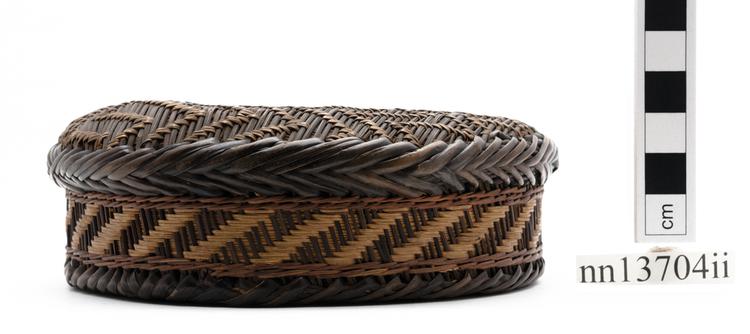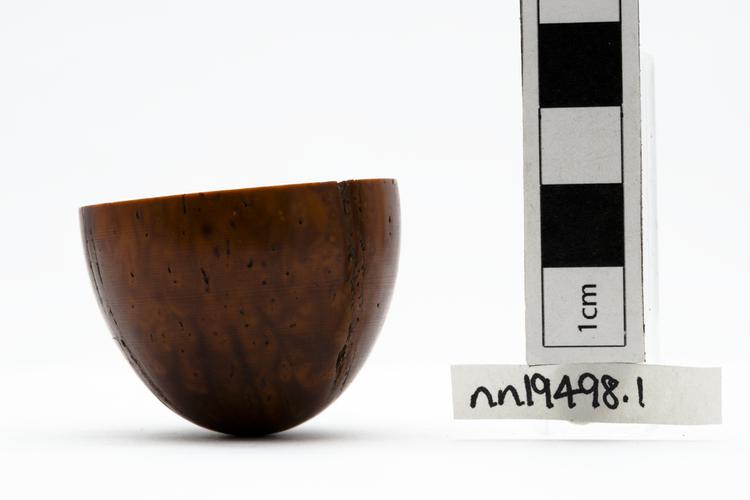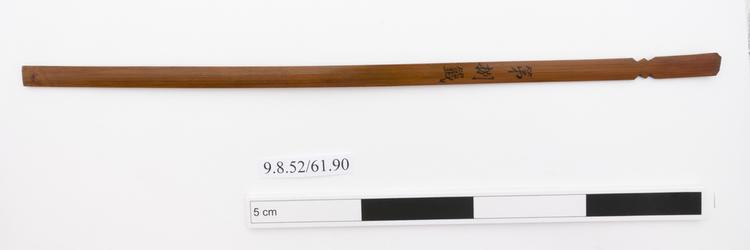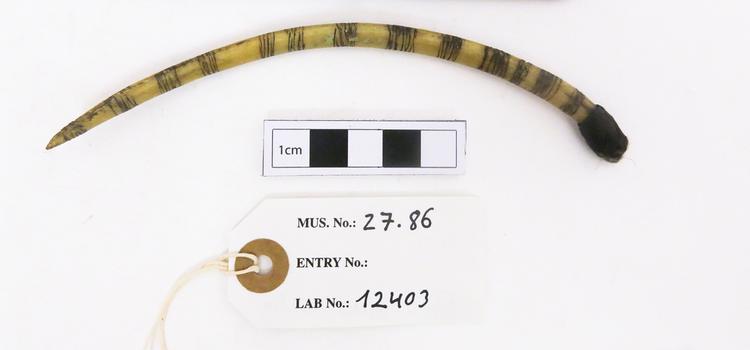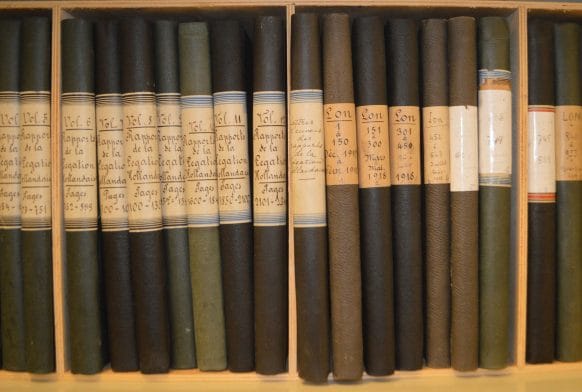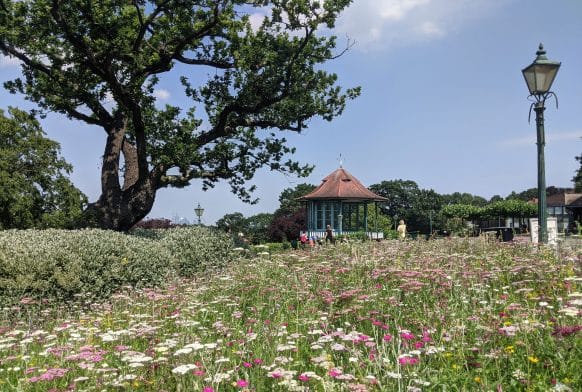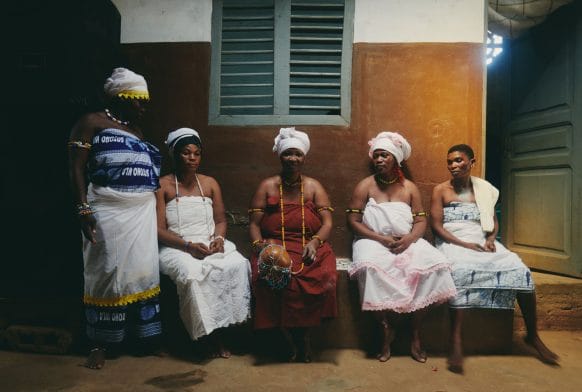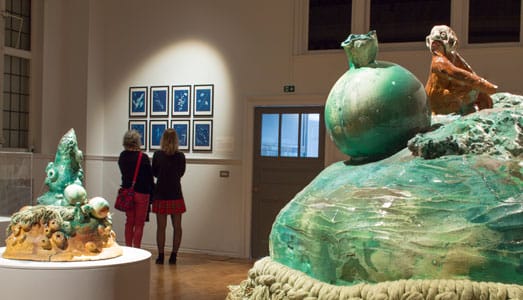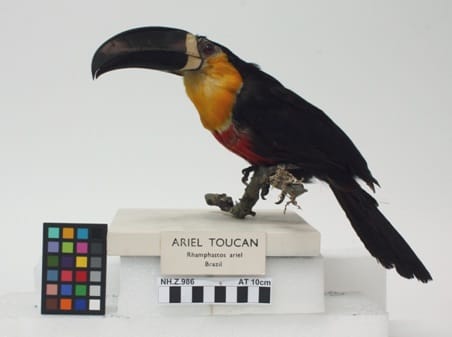Tswana gourd doll
Not much is known about Tswana child figures (van Schalkwyk, 1998: 203) and relatively few are documented. Of those known to exist in museum and private collections, little information can be traced and some have been attributed to various cultural groups. While it is true that figures of similar construction to the Tswana ‘dumbbell-shaped doll’ can be found fairly widely among other Southern African peoples (for example the Ovambo of Namibia), surveys of museum collections are helping to expand the corpus of what appears to be a group of distinctive and identifiably Tswana figures. Typically, the body of the Tswana figure consists of a bundle of string-bound reeds toped with a Monkey-orange gourd (Strychnos), which forms the head (sometimes a gourd is found at the lower end, as in the present case). The head is often crowned with a circular headpiece, with beaded fringe, and the bound body adorned with beadwork. Another distinguishing feature is the stuffed (usually leather) arms, which often terminate in short strings of beads suggestive of fingers. The National Cultural History Museum in Pretoria has at least four Tswana child figures and the Campbell Collections in Durban has three (all illustrated in Evocations of the Child). Rather than being playthings for children, such figures were used by adult women as fertility objects. References: Van Schalkwyk, J.A, 1998, 187-217 Winters, Y, 1998, 194-201 Star object (4.216-4.218) (It is interesting to note that the Horniman figures were already identified as ‘Tswana’. Does this attribution come from the Stevens sale catalogue? CE.) (I think these three figures have been on display in African Worlds. CE.)



